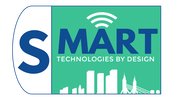|
The article is a continuation of the series of articles for disruptive technologies for smart cities we started publishing in April, 2020. It is result of the ongoing Erasmus+ project Smart technologies by design (Smart by Design) and is based on the outputs produced by the project partners GAIA & DEUSTO and ARIES T. DescriptionBlockchain is a technology that stores transactions between two users belonging to the same network in a secure, reliable and permanent way. It is an incorruptible digital ledger of economic transactions that can be programmed to record virtually everything of value. Data related to exchanges is saved in cryptographic blocks which are interconnected with a hierarchical sequence, creating a chain of different data blocks, giving the name to the technology. It allows users to trace and verify all transactions made. It is impossible to manipulate or change retrospectively making these transactions safer and more secure than current systems. One of the most important and well-known uses of this technology are the crypto-currencies like Bitcoin. There are three technologies required for the implementation of the Blockchain:
The main advantages of this technology are:
|
AuthorSmart by Design Archives
September 2021
Categories
All
|
|
The SMART by Technologies Design project [SMART by Design] Project No. 2019-1-BG01-KA202-062298 has been co-funded by the Erasmus+ Programme of the European Union.
This website reflects the views only of the author, and the European Commission cannot be held responsible for any use which may be made of the information contained therein |
SMART BY DESIGN |
SUPPORT |
Copyright ®2020 SMART BY DESIGN. All rights reserved.



 RSS Feed
RSS Feed
